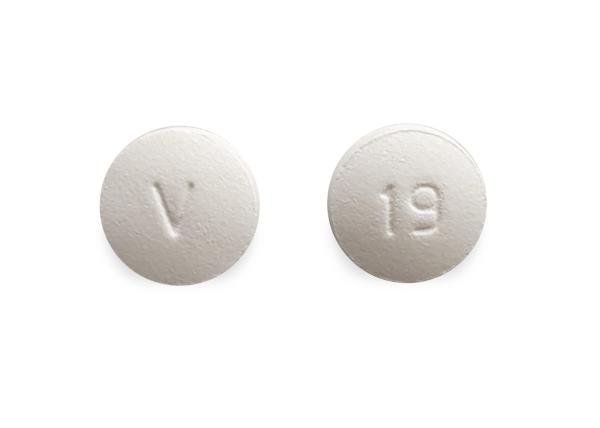Solifenacin Disease Interactions
There are 7 disease interactions with solifenacin.
- GI motility
- Kidney impairment
- Liver impairment
- Narrow-angle glaucoma
- Urinary obstruction
- CNS
- QT prolongation
Solifenacin (applies to solifenacin) GI motility
Major Potential Hazard, High plausibility. Applicable conditions: Gastrointestinal Obstruction
The use of solifenacin is contraindicated in patients with gastric retention. Caution is advised even when using this agent in patients with decreased gastrointestinal motility.
Solifenacin (applies to solifenacin) kidney impairment
Major Potential Hazard, Moderate plausibility. Applicable conditions: Renal Dysfunction
Solifenacin should be used with caution in patients with renal impairment. Increase in half-life and AUC have been demonstrated in patients with severe renal impairment. Caution should be taken when prescribing this agent to patients with renal impairment. Doses greater than 5 mg in patients with severe renal impairment is not recommended by the manufacturer.
Solifenacin (applies to solifenacin) liver impairment
Major Potential Hazard, Moderate plausibility. Applicable conditions: Liver Disease
Solifenacin should be used with caution in patients with reduced hepatic function. Increase in half-life and AUC have been demonstrated in patients with reduce hepatic impairment. Caution should be taken when prescribing this agent to patients with moderate hepatic impairment and the use of doses greater than 5 mg in these patients is not recommended by the manufacturer. Solifenacin is not recommended in patients with severe hepatic impairment. .
Solifenacin (applies to solifenacin) narrow-angle glaucoma
Major Potential Hazard, Moderate plausibility. Applicable conditions: Glaucoma (Narrow Angle)
The use of solifenacin is contraindicated in patients with uncontrolled narrow-angle glaucoma. Caution is advised even when using this agent in patients with narrow-angle glaucoma.
Solifenacin (applies to solifenacin) urinary obstruction
Major Potential Hazard, High plausibility. Applicable conditions: Urinary Retention
The use of solifenacin is contraindicated in patients with urinary retention. Caution is advised even when using this agent in patients with clinically significant bladder outflow obstruction.
Solifenacin (applies to solifenacin) CNS
Moderate Potential Hazard, Moderate plausibility. Applicable conditions: CNS Disorder, Dementia
Solifenacin is associated with anticholinergic central nervous system (CNS) effects. Patients should be monitored for signs of anticholinergic CNS effects, particularly after beginning treatment or increasing the dose. If a patient experiences anticholinergic CNS effects, dose reduction or drug discontinuation should be considered. Solifenacin should be used with caution in patients with Parkinson's disease and in patients with preexisting dementia treated with cholinesterase inhibitors due to the risk of aggravation of symptoms.
Solifenacin (applies to solifenacin) QT prolongation
Moderate Potential Hazard, Moderate plausibility. Applicable conditions: Long QT Syndrome
Dose dependent prolongation in QT interval has been observed with the use of solifenacin. This drug should be used with caution in patients with a known history of QT prolongation or patients who are taking medications known to prolong the QT interval.
Switch to professional interaction data
Solifenacin drug interactions
There are 501 drug interactions with solifenacin.
More about solifenacin
- solifenacin consumer information
- Check interactions
- Compare alternatives
- Pricing & coupons
- Reviews (226)
- Drug images
- Side effects
- Dosage information
- During pregnancy
- Drug class: urinary antispasmodics
- Breastfeeding
- En español
Related treatment guides
Drug Interaction Classification
| Highly clinically significant. Avoid combinations; the risk of the interaction outweighs the benefit. | |
| Moderately clinically significant. Usually avoid combinations; use it only under special circumstances. | |
| Minimally clinically significant. Minimize risk; assess risk and consider an alternative drug, take steps to circumvent the interaction risk and/or institute a monitoring plan. | |
| No interaction information available. |
See also:
Further information
Always consult your healthcare provider to ensure the information displayed on this page applies to your personal circumstances.


